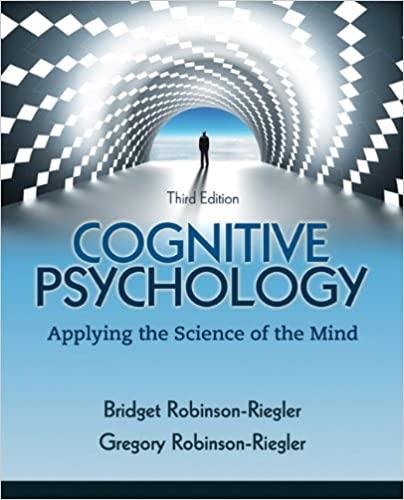Question
DISCUSSION 4 (Classroom Management). The initial task was to answer the following: Choose a low or high-incidence disability and discuss strategies that you would consider
DISCUSSION 4 (Classroom Management).
The initial task was to answer the following: Choose a low or high-incidence disability and discuss strategies that you would consider putting in place for a student in your classroom. You may want to base your response on a student you have observed at your field experience location. If you do choose to include a personal experience, be mindful of confidentiality and professional terminology for a student's diagnosis.
What must be done now is to respond to 2 people with a minimum of 100 w0rds. What would you reply to him?
| Person 1 | Opinion |
| Wendy Prince I have chosen autism as my low-incidence disability. I chose this because I have worked with children with autism, and there are things we did that work. I would set up a space in the corner, away from the window and bright lights. I would put a desk, a chair, and a lamp with a dimming light in that area. I would decorate that side of the wall with posters that are not very colorful. Sometimes the noise bothers them more than it would another child. They will scream and make noise, but when they hear the other children making noise, they tend to hold their ears and move away. I would have stress balls, fidgets, paints, crayons, and puzzles in that area of the classroom so the child can have calm things to do. Whenever they are overwhelmed with classroom activities, they can have the option to move into what I would call their safe space away from the rest of the class. | |
| Person 2 | Opinion |
| Lalaine Ebarle For the pre-schoolers I have been working with, a low-incidence disability I chose is an emotional or behavioral disorder. While working with the children under five years old. Not all students can be fully diagnosed with a disability because they are still learning to handle their emotional and social skills. For a couple of students in the preschool classroom, J is fun and outgoing, but when she does not want to follow directions, she becomes upset and loud. I have watched the teacher direct her to her chair and explain what she should do calmly; if J does not want to do it, she begins to yell and scream. Observing her actions, I felt stressed, but the teacher would let her have her tantrum for 2 minutes, and when she calmed down, the teacher would distract her and tell her this was the crayon to color the box. I realized that she was given a pencil at first and then was given the crayon. J enjoys crayons better. Children understand to stay in line when we play in the playground, but J likes to run. The teacher or aide explains that she cannot run and should walk with her friends, but we must hold her hand as we walk. There are days when she is a great pupil, but then when it is difficult. |
Step by Step Solution
There are 3 Steps involved in it
Step: 1

Get Instant Access to Expert-Tailored Solutions
See step-by-step solutions with expert insights and AI powered tools for academic success
Step: 2

Step: 3

Ace Your Homework with AI
Get the answers you need in no time with our AI-driven, step-by-step assistance
Get Started


